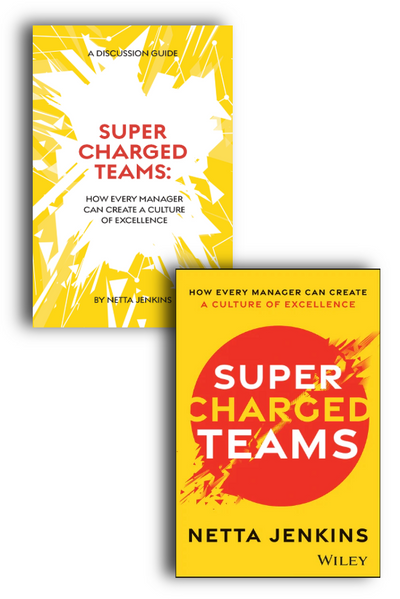
It's National Disability Awareness Month, and we wanted to post an excerpt from a book that supports that awareness - Nadine Vogel's Dive In. In it, Vogel talks about the untapped special needs workforce that exists, and how working with them (as well as preparing your company to work with current employees who may become disabled) can bring great potential for profits to your organization.
Here's the excerpt:
Increasing Productivity, Embracing Potential
Why your company needs the Special Needs Workforce
Partially excerpted from Dive In, Springboard into the Profitability, Productivity, and Potential of the Special Needs Workforce By Nadine O.
It's National Disability Awareness Month, and we wanted to post an excerpt from a book that supports that awareness - Nadine Vogel's Dive In. In it, Vogel talks about the untapped special needs workforce that exists, and how working with them (as well as preparing your company to work with current employees who may become disabled) can bring great potential for profits to your organization.
Here's the excerpt:
Increasing Productivity, Embracing Potential
Why your company needs the Special Needs Workforce
Partially excerpted from Dive In, Springboard into the Profitability, Productivity, and Potential of the Special Needs Workforce By Nadine O. Vogel as told to Cindy Brown
Author's note: While writing this book, I wanted to address not just Americans with disabilities, but two other enormous segments of the population: parents of children with special needs, and employees who acquire age-related disabilities. I coined the term "special needs workforce" to in order to include all of these talented employees and potential recruits.
54 million American adults identify themselves as disabled. Another 23 million are parents who have at least one child aged 5 to 16 with special needs. Experts agree that there are even more people with impairments or disability-related issues, who do not identify as such – e.g. people who may have acquired a hearing loss, but don't consider themselves hard-of-hearing. People with age-related impairments seldom identify themselves as having a disability. Others may find that medical technology, like cochlear implants or some of the amazing prosthetics now available, lessens the impact of their impairments so much that they don't consider themselves disabled. Still others may be loath to disclose a hidden disability, fearing discrimination. There's more – those numbers most likely don't include the 2.9 million veterans with disabilities, including more than 180,000 from the recent war on terrorism.
"But Why Does My Company Need Them?"
I'm often approached by people who say, "I understand that this is a large market. I understand that more and more people with disabilities are educated. Even knowing that, why is it so important that I focus on people with disabilities? "
Surfing the Silver Tsunami
To begin with, you're going to need the special needs workforce. Our nation is aging, and the wave of retirees from the baby boom generation is gaining momentum. The Population Reference Bureau (PRB), predicts that by 2030, about one-fifth of the U.S. population will be older than 65 and the Department of Labor estimates that, by 2014, thirty-six million employees will leave their jobs. The baby boomers are retiring.
In a 2006 study by the Society for Human Resource Managers (SHRM), Human Resource professionals listed the upcoming demographic shift as one of the most critical issues facing employers, citing the implications for leadership and knowledge retention.
"But wait," you say, "that was 2006.Things have changed since then." It's true, things have changed, and it may be that more people decide to stay in their positions for financial reasons. Some also believe that the globalization will help to offset the retirement wave. Maybe, maybe not. It'd be wise to consider the fact that the United States' population is not the only one that's aging. Europe and Japan expect the largest increases in their elderly populations.
Let's say, for the sake of argument, that the silver tsunami turns out to be just a good-sized swell – a "sneaker wave." Are you familiar with those? They're big waves that, yes, "sneak" up on you, and can carry you out to sea. Warnings posted along beaches known for these waves advise against turning your back to the sea. Don't turn your back on this wave, either; prepare for it. Let's say that your valuable older workers stay in the workforce; in order to keep them, and to keep them working productively, you will need to support them, perhaps by accommodating impairments that often accompany aging. According to an Association of American Retired Persons (AARP) study, nearly 70 percent of people over age fifty will be dealing with some sort of disability in their lifetime. Support them, and you'll keep them.
More Than You Know
And here's a great perk – supporting older workers and people with disabilities helps you to support other employees, not just the 15 percent with disability related-issues that you already employ. Bet I caught your attention there. Let me say it again: the 15 percent of employees with disability-related issues that you already employ. Most organizations have no idea that their workforce is already comprised so heavily of people with disabilities (6%) and parents of children with special needs (9%). The number may not be obvious, perhaps because people haven't disclosed their disabilities, /or opened up about their parenting situations. Once these folks see that you are supporting employees with similar issues, they may feel more comfortable in asking for assistance.
You're also going to find yourself with another group of valued employees who will need your support – those who become disabled while working for you. Not only can anyone become disabled at any time, but the majority of disabilities are acquired during adulthood. According to the 2000 National Organization on Disability/ Harris Survey of Americans with Disabilities, only 24 percent of people with disabilities surveyed acquired those impairments before age nineteen. I'm happy to do the math for you: that means, on average, 76 percent of disabilities are acquired after age twenty – during the time when a person is most likely to be employed. Don't you want to retain your great employees, who suddenly (or not so suddenly) find themselves disabled?
The logic follows that if you support your employees, you'll also retain them, thereby reducing turnover – another impact to your bottom line. According to the American Management Association, turnover-related expenditures can cost up to 150 percent of an experienced worker's annual salary. Are you beginning to connect the dots? Support equals productivity and retention, both of which ultimately impact your company's profitability.
Becoming a Employer of Choice
But let's not stop there. Support and flexibility are key components of being an employer of choice. Actively supporting these values shows a respect for work-life balance. Surveys show that Gen Xers and Gen Ys (the hot new talent you need) both value this balance, to the point where they will quit (or not accept) jobs that interfere with their family and off-work life. According to the SHRM study mentioned previously, work-life balance is the second most important societal trend. It's no flash in the pan, either. It's expected to be a career-long concern for Generations X and Y, and will become increasingly important as couples have children later in life, and as people find themselves caring for aging parents.
Wrapping Up the Reasons
By embracing the potential of the special needs workforce – and supporting them, your company can:
Reduce turnover
Retain valued employees
Increase the productivity of all employees
Promote your company as employer of choice
And that's why you need the special needs workforce.





















































